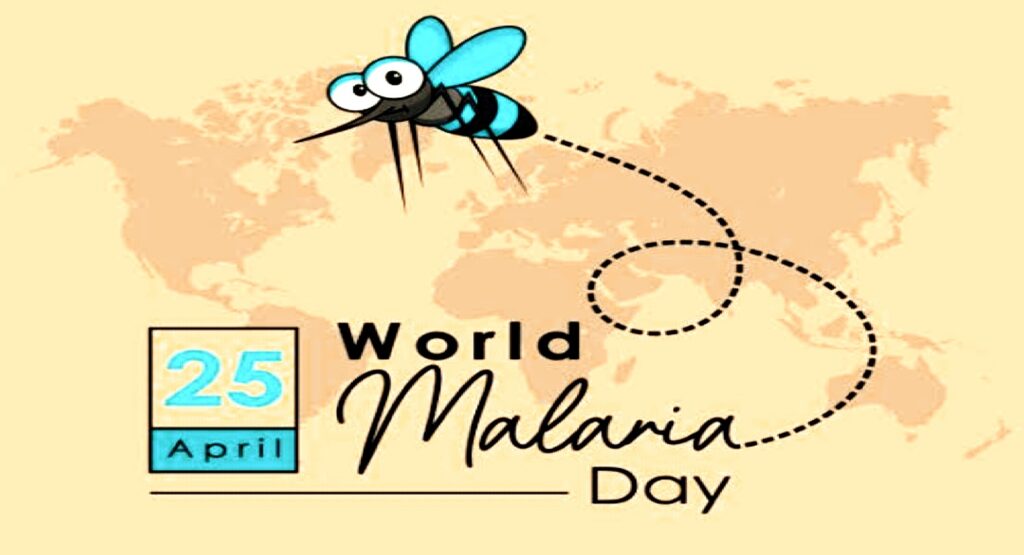Manashimaya

Every year on April 25, World Malaria Day is a crucial occasion to spread awareness about malaria, a potentially fatal illness brought on by parasites, that humans contract through mosquito bites. This day, instituted by the World Health Organization, (WHO) in 2007, is to raise awareness of the causes and symptoms of malaria, to emphasize the global commitment to controlling, preventing, and eventually eradicating the disease.
The theme, for this year’s World Malaria Day, is “Accelerate the fight against malaria for a more equitable world.” This theme underscores the importance of intensifying our efforts to eradicate malaria at its core while emphasizing the need for education to prevent its spread.
On World Malaria Day 2024, the World Health Organization (WHO) will focus on addressing challenges related to health equity, gender equality, and human rights in global malaria interventions. Together with the RBM Partnership to End Malaria and other collaborators, WHO will also outline practical strategies to overcome these obstacles.
Understanding Malaria: Causes and Symptoms
Humans contract malaria from the bites of Anopheles mosquitoes carrying Plasmodium parasites. These parasites enter the body and grow in the liver before affecting and killing red blood cells. The parasites, Plasmodium falciparum, P. vivax, P. ovale, and P. malariae are the most prevalent forms that cause malaria in humans.
Common Symptoms of Malaria
Usually starting 10 to 15 days after the infective insect bite, malaria symptoms manifest. But occasionally, months or even years may pass after the initial infection before symptoms appear. Typical malaria symptoms include:
- Temperature and chills: A high temperature, chills, and shivering are frequently the initial signs of malaria.
- Headache and Body Aches: Severe headaches and body aches are frequent, making everyday tasks difficult.
- Excessive Fatigue and Weakness: Malaria can result in significant fatigue and weakness, which might impair a person’s capacity for regular activities.
- Nausea and Vomiting: Abdominal discomfort, nausea, and vomiting are sometimes experienced by malaria patients.
- Sweating: Persistent perspiration is another typical malarial symptom, particularly at night.
The Global Response to Malaria
Despite significant progress in recent years, malaria remains a major public health challenge, particularly in tropical and subtropical regions. According to WHO, in 2019 alone, there were an estimated 229 million cases of malaria worldwide, resulting in approximately 409,000 deaths. Children under the age of five are especially vulnerable, accounting for more than two-thirds of all malaria deaths globally.
Key Strategies to Combat Malaria
- Prevention: The mainstay of efforts to combat malaria is still prevention. The use of bed nets, sprayed with insecticide, indoor residual spraying, and preventive antimalarial therapy for susceptible populations are crucial strategies for mitigating the spread of malaria.
- Early Identification and Management: In malaria, prompt identification and treatment can minimize consequences, and lower the chance of future transmission. Access to high-quality healthcare services is essential for managing malaria effectively, especially in isolated and underserved locations.
- Research and Innovation: To combat malaria, more funding must be allocated to research and development to create new instruments like vaccinations, enhanced diagnostic procedures, and potent antimalarial medications.
Precautions to combat Malaria
Although it may be prevented and treated, malaria spreads easily when people, communities, and governments work together to stop it. These important safety measures can aid in the fight against malaria:
1. Using Bed Nets Treated with Insecticide: Insecticide-treated bed nets can dramatically lower the risk of mosquito bites, some of the ways, malaria is often spread.
2. Indoor Residual Spraying: Regular indoor pesticide spraying can help eliminate mosquitoes that transmit the malaria parasite, and can lower transmission rate.
3. Antimalarial Drugs: To avoid infection, visitors to regions where malaria is widespread should speak with medical professionals about the best antimalarial drugs to take.
4. Elimination of Mosquito Breeding Sites: You may assist in reducing the number of mosquitoes by eliminating mosquito breeding sites by removing sources of stagnant water, to make sure that sufficient drainage is in place.
5. Early Diagnosis and Treatment: In cases of malaria, prompt diagnosis and treatment can lower the risk of complications and subsequent transmission.
Malaria in India:
Responses and Consequences Malaria continues to pose a serious threat to public health in India, especially in rural and tribal regions. Due to the disease’s disproportionate impact on underprivileged populations, social justice and public health are significant concerns.
Responses to the Illness Due to ongoing efforts by the government and non-governmental groups to educate communities about the disease, public knowledge of malaria is reasonably high in India. However, stigma and misconceptions surrounding malaria can occasionally impede attempts at efficient treatment and prevention.
Implications The implications of malaria in India are vast and multifaceted. It affects productivity, leads to economic losses due to healthcare expenditures, and eventually becomes a burden on the healthcare system. Furthermore, malaria-related morbidity and mortality contribute to poverty and perpetuate a cycle of poor health and socioeconomic disadvantage in affected communities.
The Role of Global Partnerships
The fight against malaria requires a collaborative approach involving governments, non-governmental organizations, the private sector, and communities. Global partnerships, such as the Roll Back Malaria Partnership and the Global Fund to Fight AIDS, Tuberculosis, and Malaria, play a major role in mobilizing resources, coordinating efforts, and advocating for political commitment to malaria elimination.
The heartbreaking reminder of the millions of lives impacted by malaria and the pressing need to step up efforts to control and eradicate this preventable illness is provided by World Malaria Day. We can enable people and communities to take preventative action to safeguard themselves and their loved ones by increasing awareness of the causes, symptoms, and prevention of malaria. Let’s reaffirm our shared commitment to eradicating malaria so that everyone can live a healthy and productive life.
